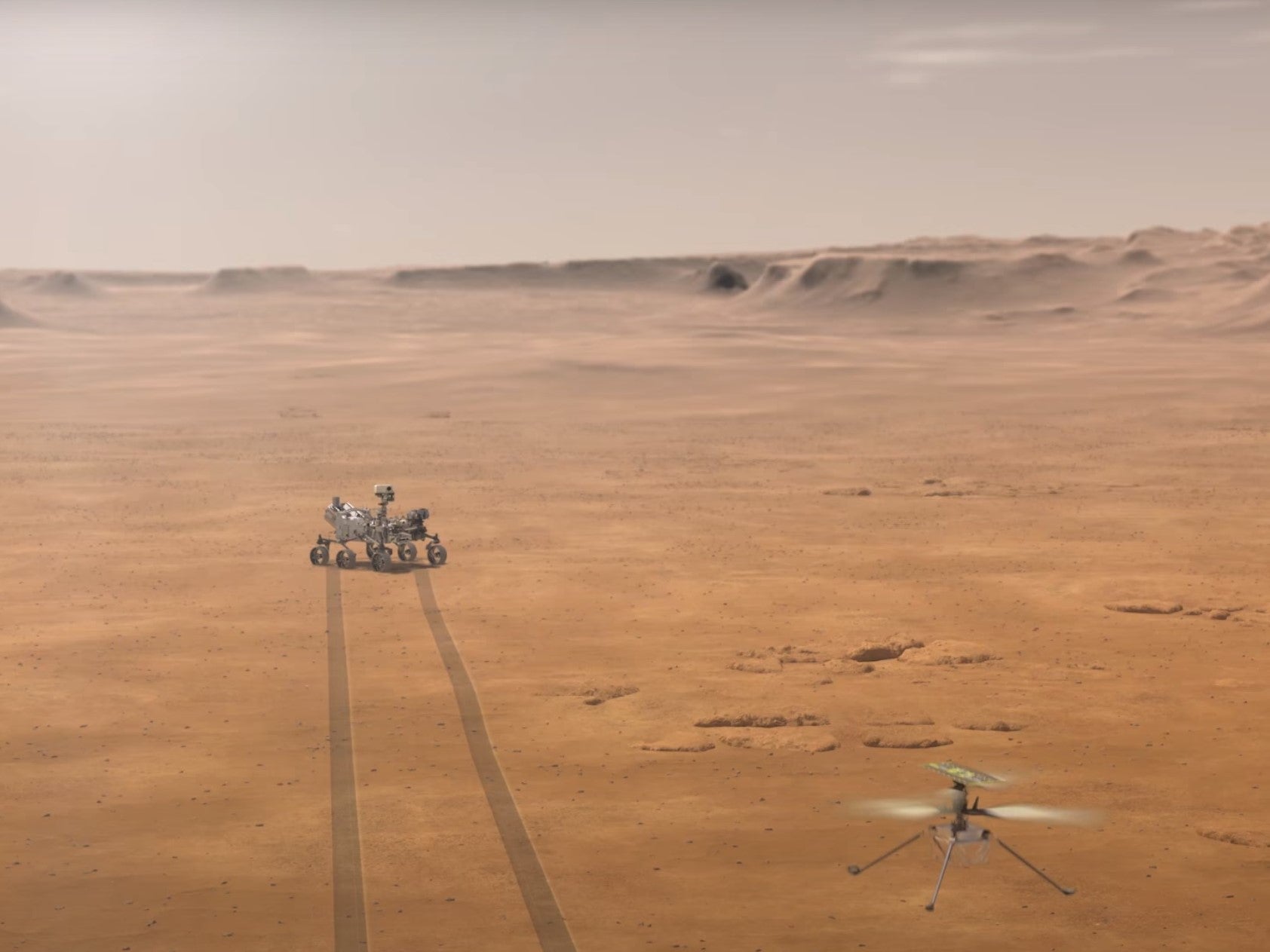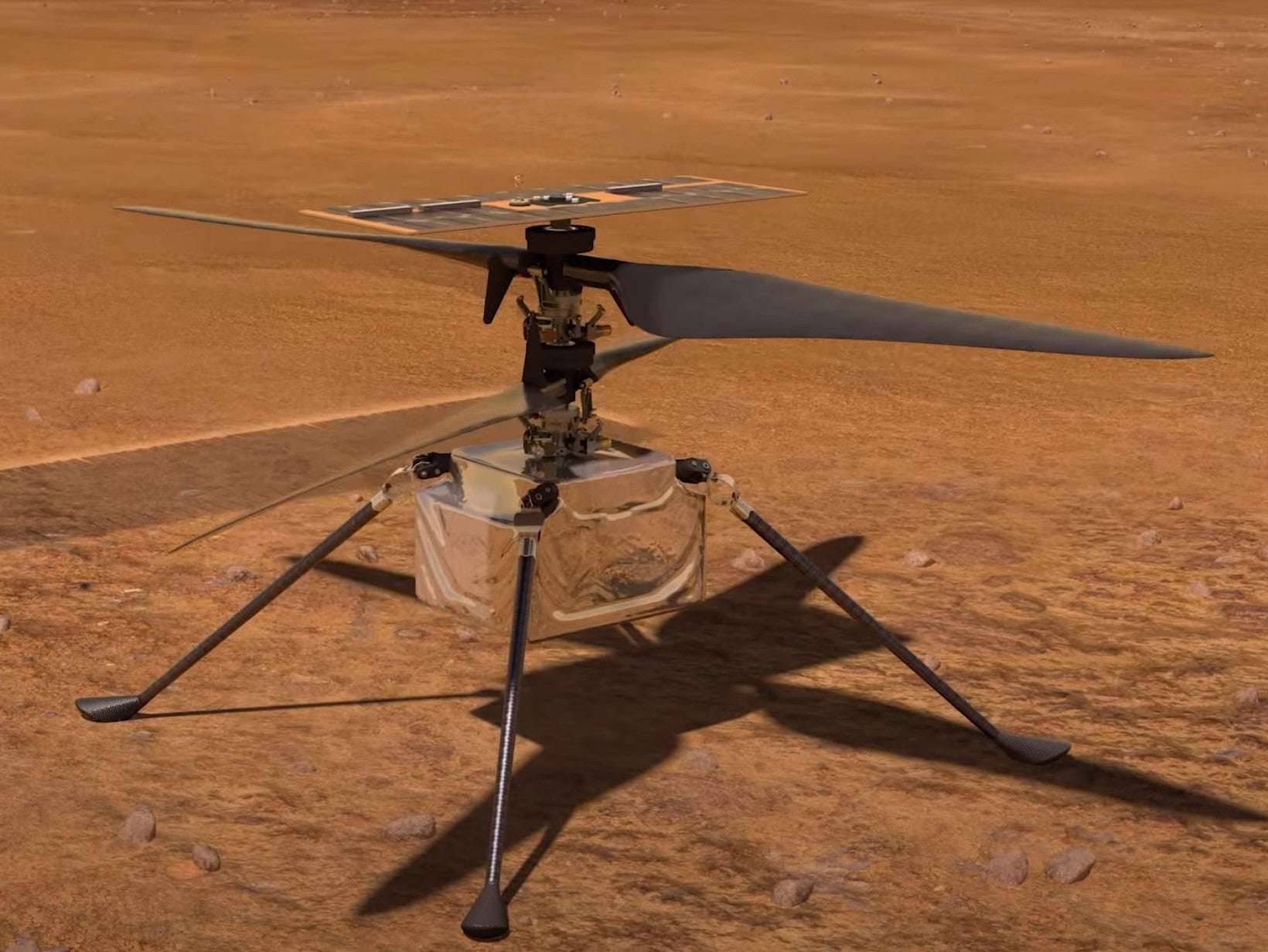Nasa prepares to fly a helicopter on Mars as part of Perseverance lander mission
Space agency says experimental flight test is 'unlike anything ever attempted'
Nasa has announced how it plans to fly a helicopter on Mars in an attempt to prove that powered-flight is possible on another planet.
The Ingenuity Mars Helicopter will launch from Earth this summer attached to the belly of the Perseverance rover as part of the space agency's next mission to Mars.
After landing on Mars on 18 February 2021, the helicopter will then need to safely detach and navigate the 5-inch journey from the rover to the surface of Mars before attempting lift off.
“Ingenuity is unlike any other helicopter ever built because powered controlled flight at Mars is unlike anything ever attempted,” said MiMi Aung, project manager of the Mars Helicopter at Nasa’s Jet Propulsion Laboratory.
“And then we had to figure out how to hitch a ride a safely get deployed from the Mars 2020 Perseverance rover.”
The team at Nasa’s Jet Propulsion Laboratory plans to locate a suitable airfield after the rover lands, which could take up to two months.
It will need to be a 10-by-10 metre patch of Martian surface that is relatively flat, obstruction-free, and viewable by Perseverance from around 100 metres away.

If the experimental flight test proves successful, Nasa hopes to deploy second-generation helicopters on future Mars missions to add an aerial dimension to their explorations.
Potential uses could include scouting for human crews, investigating caves and craters, and carrying small payloads from one part of the planet to another.
Gravity on Mars is around 38 per cent of Earth’s due to the planet’s smaller mass, however the thin atmosphere makes it extremely difficult to fly.

The helicopter is therefore very light – less than 2 kilograms – and uses a dual system of counter-rotating blades that will attempt to generate lift in an atmosphere that is just 1 per cent as dense as Earth's.
Nasa administrator Jim Bridenstine said at a news conference that the mission, which launches on 20 July, is the thing he is most looking forward to.
He said: "I'll tell you, the thing that has me the most excited as a Nasa administrator is getting ready to watch a helicopter fly on another world."
Join our commenting forum
Join thought-provoking conversations, follow other Independent readers and see their replies
0Comments